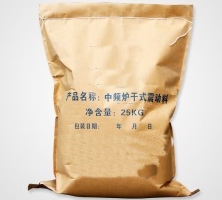- 02
- Nov
The difference between induction furnace ramming material and ladle castable
The difference between induction furnace ramming material and ladle castable

Generally, induction furnaces are smaller than electric arc furnaces and are mainly used for smelting castings and steel for certain precision castings. In recent years, it has also been used to smelt stainless steel. It is relatively simple to use refractory materials, which are generally knotted materials. Metallurgical spare parts For induction furnaces for melting cast iron, quartz knotting materials are generally used. When smelting some precision castings, dry knotting materials of aluminum-magnesium and corundum spinel are used, and aluminum-silicon ramming materials are also used. There are also some induction furnaces that use ready-made crucibles. For metallurgical spare parts, when the induction furnace is to be opened, put the prepared crucible in the induction furnace, and the gap between the crucible and the induction coil is firmed with dry knotting material. This method is convenient to replace and can improve the utilization rate of the equipment.
The function of the ladle is to take the molten steel from the upstream steelmaking furnace and transport the molten steel to the refining equipment outside the furnace or the pouring site. Ladles are not only divided into die-cast ladle and continuous casting ladle, but also divided into electric furnace ladle and converter ladle. The use conditions of metallurgical spare parts are different, and the refractory materials and construction methods used are also different.
Generally, there is an insulation layer outside the permanent layer of the ladle. The refractory materials used include clay bricks, metallurgical spare parts pyrophyllite bricks and insulation boards, such as calcium silicate insulation boards; the permanent layer is mainly made of lightweight high aluminum castables (China Metallurgical Industry net).
The working layer of the electric furnace continuous casting ladle is generally made of brick lining. Magnesia-carbon bricks and metallurgical spare parts are used for flooded lines, while molten pools (including walls and bottoms) generally use aluminum-magnesium-carbon bricks or magnesia-carbon bricks, while some European steel plants use carbon-bonded non-burning magnesia-calcium bricks.
As for the working lining of small converter ladle, bauxite-spinel lining is generally selected, and some are repaired.
For medium and large ladles, generally use alumina magnesia castables and metallurgical spare parts instead of corundum magnesia castables or corundum aluminum-magnesium spinel castables as refractory materials for the ladle wall and bottom working layer, and magnesia carbon for slag line Brick masonry.
